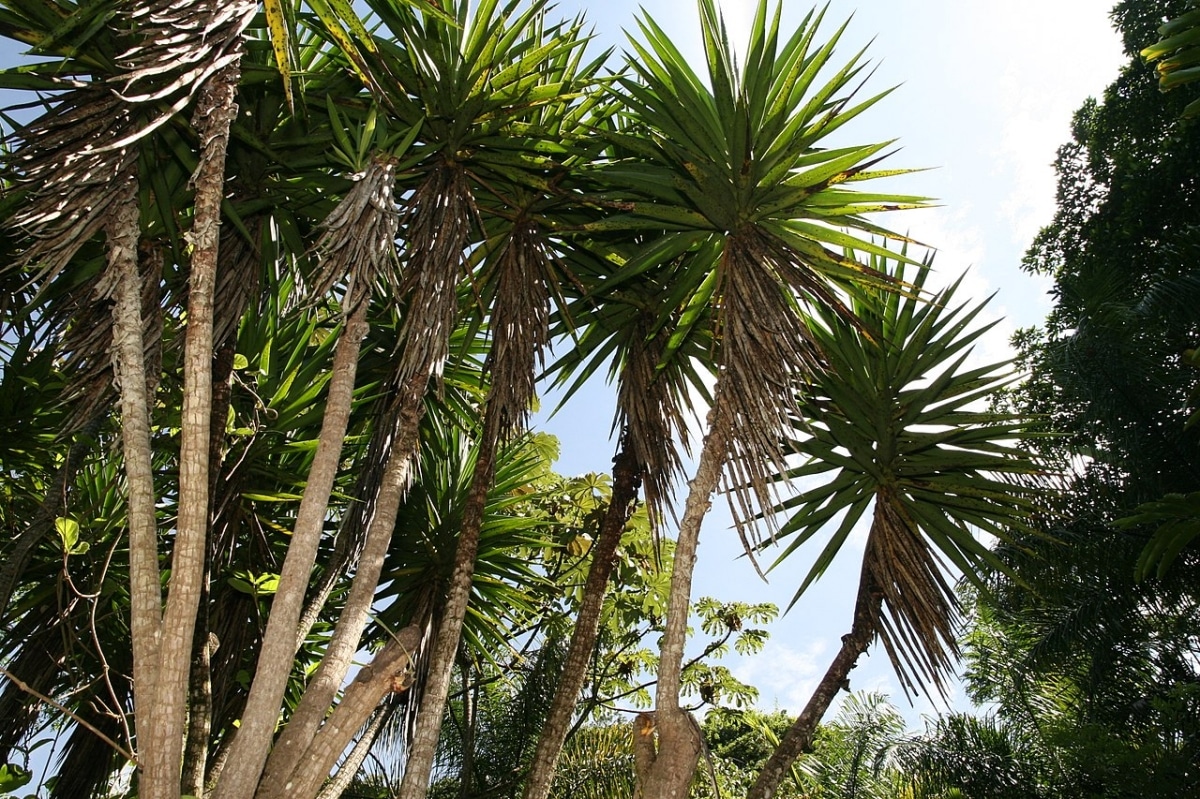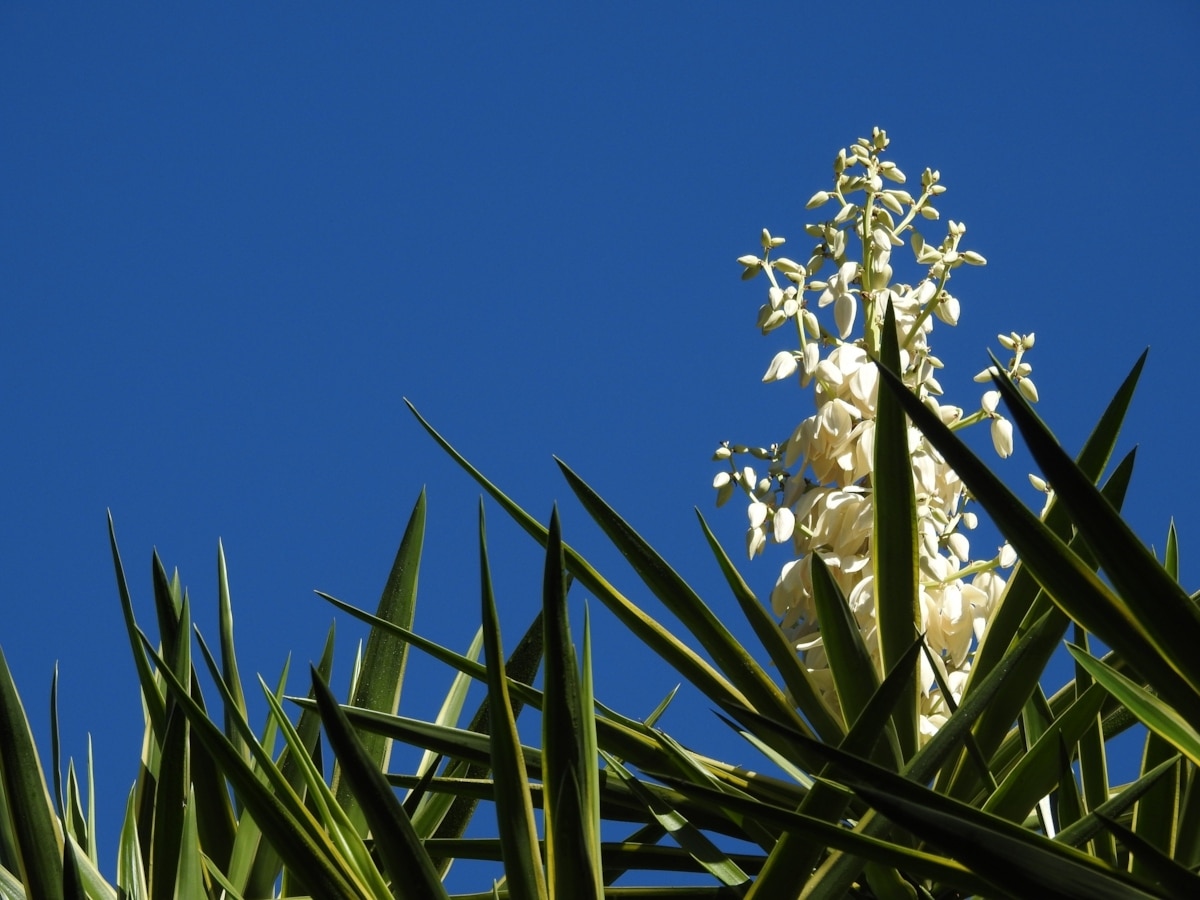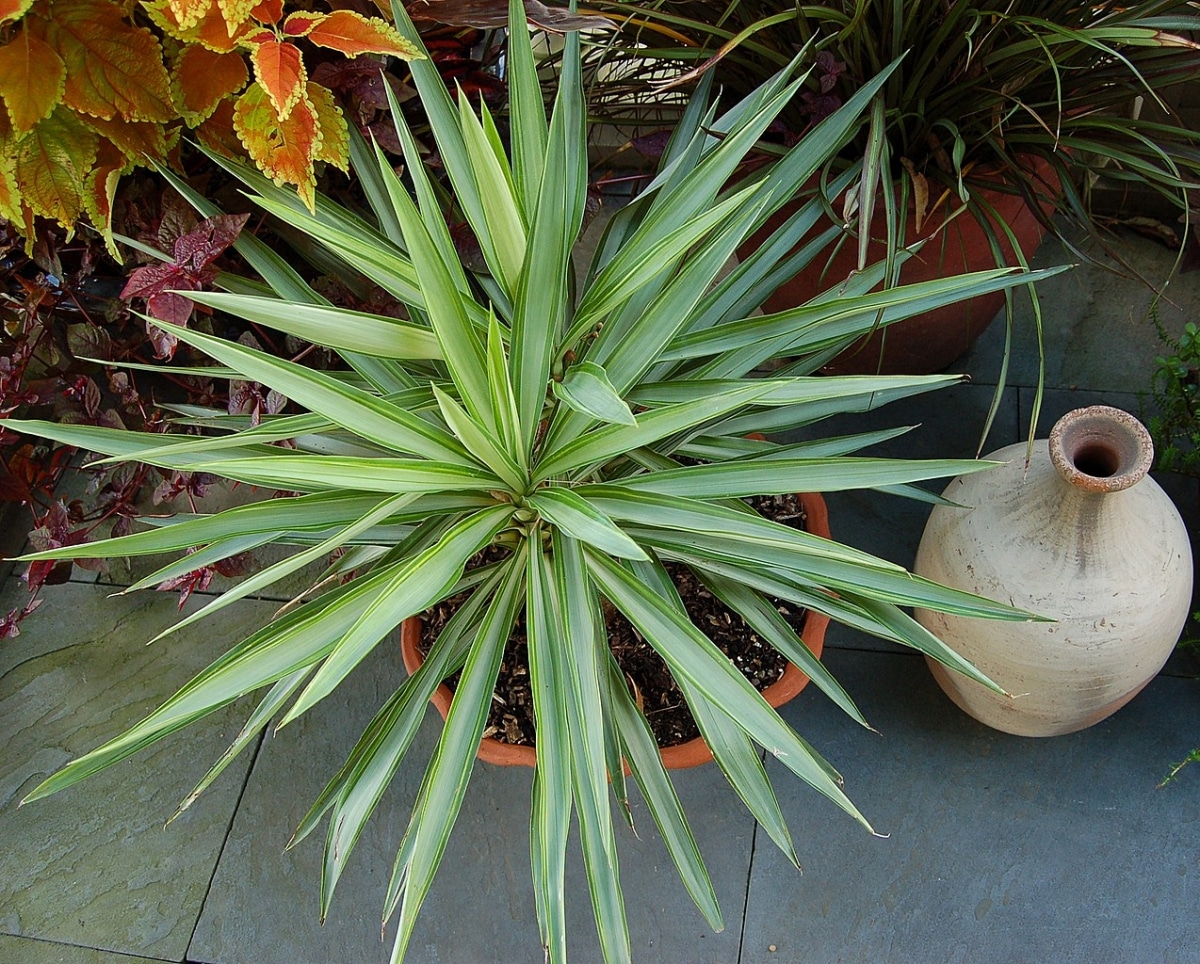
Image - Wikimedia / David J. Stang
La yucca elephantipes it is an arboreal plant that, compared to, for example, a maple, has very few leaves, but these are much better adapted to arid environments. In addition, they are highly protected against possible predators, since their texture is leathery and therefore unappetizing.
in the west It is often grown as a houseplant; however, if the winter is not very harsh, it is preferable to have it outside, since inside the house there is usually not enough light for it to grow well.
Origin and characteristics of yucca elephantipes

Image – Wikimedia/Åsa Berndtsson
The elephant foot yucca or indoor yucca, as it is also known, is a Mesoamerican plant that reaches a height of 10 meters. It develops a woody trunk that widens at the base, and branches off a short distance from the ground. It is not a tree, since it is monocotyledonous (like palm trees for example) and trees are dicotyledonous; however, since it is arborescent, we thought it would be interesting to talk about it on her blog.
The crown is made up of simple, elongated leaves, up to 1 meter long and 5-7 centimeters wide. These end in a sharp point, which is nothing more than a thorn that, although it is harmless, it does not hurt to be a little careful when you walk by its side.
The flowers arise from a stem at the top of the branches, which springs from the center of the rosette of leaves during the summer.. They are flared, usually white but can be cream. If they have been pollinated, the fruits ripen towards the end of summer or the beginning of autumn, depending on how kind the weather is to the specimen.
There are several cultivars, although the best-selling ones are 'Jewell', which has leaves in three different shades, and 'Variegata', with green leaves edged with yellow.
For what do you use it?
La yucca elephantipes has a ornamental use. It is a very beautiful succulent plant, which resists drought very well, and also heat. Therefore, its cultivation is recommended in those places where it rains little, even if the dry periods coincide with summer.
Now, you should know that in their places of origin, young leaves and flowers are also used as vegetables.
How to care for a yucca elephantipes?
In order for it to be as beautiful as the first day, or even more so, its needs for light, water, soil, etc. must be known. So let's get to it:
Location
- Body exterior:Grow: Elephant foot cassava should be grown in a sunny location, outdoors and in the ground whenever possible. Let's remember that it can reach up to 10 meters in height, so if we don't have a garden and we have no other choice but to grow it in a pot, we will not only have to find a large container for it, but we will also have to prune it from time to time. from time to time
- Interior: Are there significant frosts in your area? If the thermometer drops below -3 degrees Celsius, then you will need to protect your plant by bringing it indoors. Of course, another option is to always have it inside, but I only recommend it if it can be in a room where there is a lot of light from outside, and if it is pruned when necessary to control its growth.
Earth

Image - Wikimedia / David J. Stang
- Garden: grows in fertile and well-drained soils.
- Flower pot: if you are going to have it in a pot, we advise you to plant it with a substrate for green plants such as this. Another option is to mix peat with perlite in equal parts.
Irrigation
Irrigation it has to be moderate, but especially if it is kept as an indoor plant since the soil takes longer to dry. What's more, with one or two weekly waterings you can have enough. But yes, if it is in a pot and you have put a plate under it, remove the water after each watering so that the roots do not rot.
Subscriber
La yucca elephantipes It is not a plant to which it is mandatory to pay. If that it is advisable, but as we said before, it lives without problems in poor soils. If you want to throw him out from time to time earthworm humus, perfect; otherwise nothing will happen to you.
Now, things change if it is grown in a pot. In these conditions, it is highly recommended to fertilize it with an ecological liquid fertilizer, such as seaweed fertilizer, following the instructions for use that you will find on the product packaging.
Multiplication
It is a plant that multiplies by seeds and cuttings in spring-summer.
Pruning
Sometimes it has to be pruned, either because the garden is small and the plant is growing a lot, or because it is kept indoors. But you should know that although it recovers and sprouts well, you must avoid at all costs making cuts in thick branches otherwise the plant would not look pretty.
Therefore, it is highly advisable to prune the tender branches, because the cut will be small. If you want it to have the shape of a small tree, do not wait for it to become an adult to remove the shoots that come out in the lower half of the trunk: do it as soon as they come out.
Plagues and diseases

Image - Wikimedia / David J. Stang
The truth is that it usually doesn't. If the weather is good, and you receive the care you need, you won't have any problems. But if it is watered too much and/or if it is grown in poorly drained soil, excess moisture will weaken the roots and 'awaken' pathogenic fungiThey will attack her.
Therefore, It is important that the risks are controlled and planted on land that does not easily flood or that, at least, absorb water quickly. In addition, if it is kept in a pot, it must have holes at its base, otherwise it will be difficult to recover an elephant foot yucca that has suffered excess water.
If this situation is reached, the leaves will fall and the trunk and branches may become soft. have to deal with fungicide, cut everything that is rotten, seal the wounds with healing paste, and change the soil. And to wait.
Rusticity
It is a plant that resists frost down to -5ºC, as well as maximum temperatures of up to 40ºC (maybe a little more if you have water).
What did you think of yucca elephantipes?